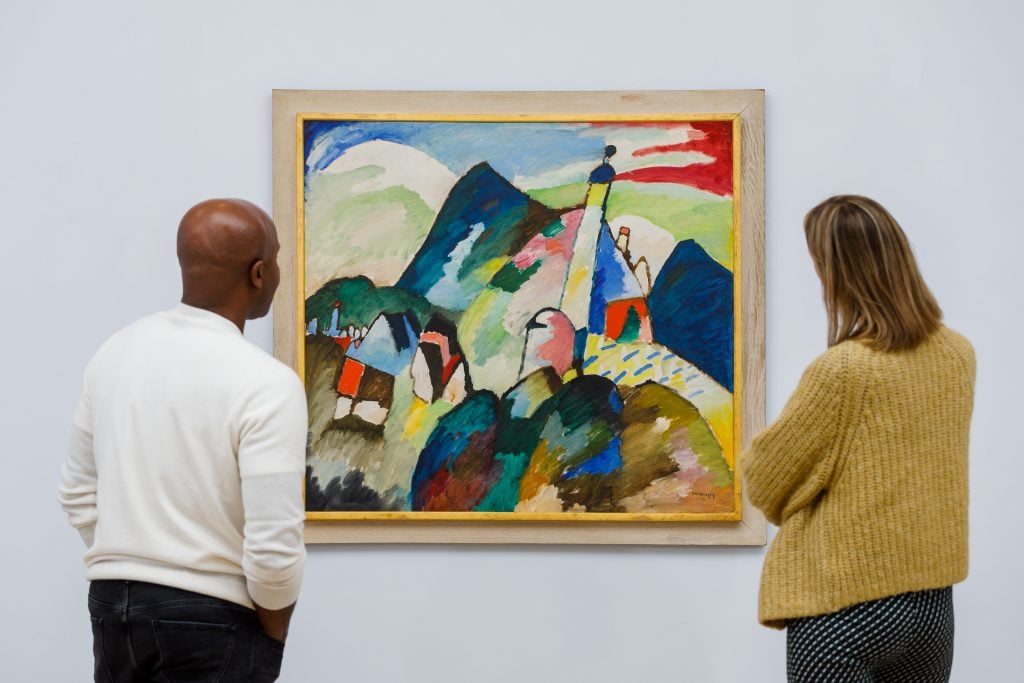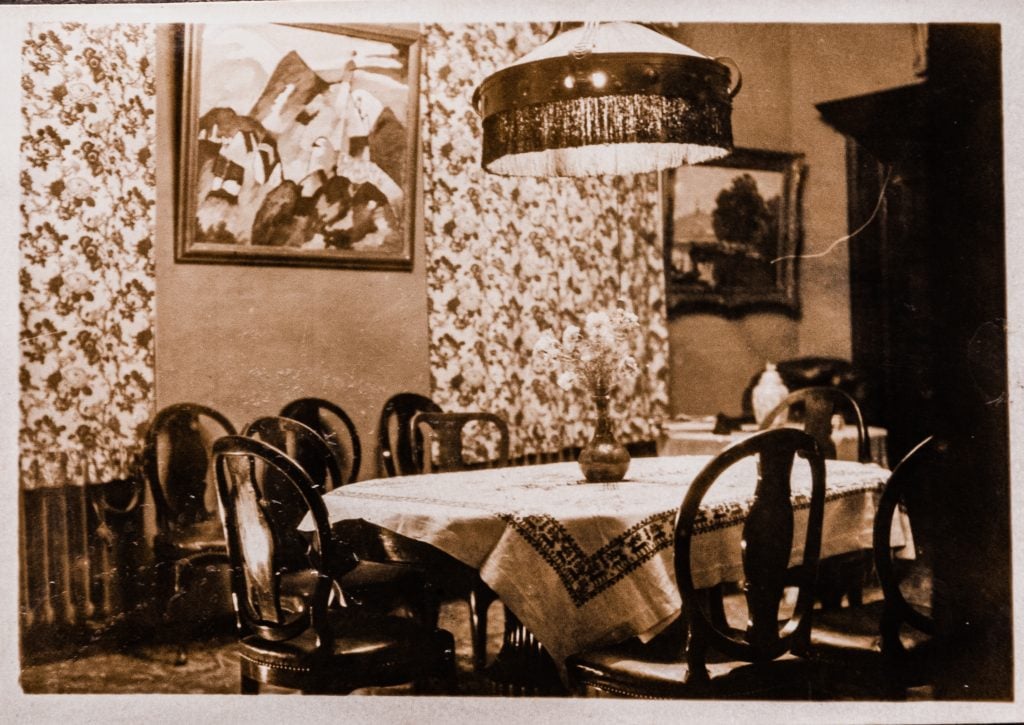Auctions
A Prized Kandinsky Painting Recently Restituted to the Heirs of a Jewish Collector May Fetch $45 Million at Sotheby’s
The Van Abbemuseum restituted the painting to the heirs.

The Van Abbemuseum restituted the painting to the heirs.

Sarah Cascone

A Nazi-looted Wassily Kandinsky painting could soon fetch $45 million at Sotheby’s London on March 1.
Last fall, the Van Abbemuseum in Eindhoven, the Netherlands, restituted the work to the heirs of its former Jewish owner, resolving a 12-year legal dispute surrounding its rightful ownership.
If the piece meets expectations, it will top the artist’s current auction record, which has stood at €33 million ($41.8 million) since 2017, according to the Artnet Price Database.
The auction house is billing the 1910 painting, titled Murnau mit Kirche II, as a key masterwork by Kandinsky that represents a radical turning point in art history. The canvas represents the beginning of the development of the abstract language that would define the rest of the artist’s career—and help influence the Abstract Expressionist movement.
“Kandinsky’s Murnau period came to define abstract art for future generations, and the appearance of such an important painting—one of the last of this period and scale remaining in private hands—is a major moment for the market and for collectors,” Helena Newman, chairman of Sotheby’s Europe and worldwide head of Impressionist and Modern art, said in a statement.

Wassily Kandsinky, View of Murnau with Church (1910). Courtesy of Sotheby’s London.
The work’s original owners were Johanna Margarete Stern and Siegbert Samuel Stern, a husband-and-wife duo who owned a thriving Berlin textile business and built a wide-ranging art collection that included both Golden Age Dutch paintings and contemporary masterpieces.
Siegbert died in 1935, and Johanna Margarete fled to the Netherlands to escape the Nazis. She was forced to sell much of her art collection. She ultimately died at the Auschwitz concentration camp in 1944, one of nine immediate family members murdered during the war. But some of her descendants survived, including her granddaughter, Dolly, who spent two-and-a-half years alone in hiding, from the ages of seven to 10. (She died in 2014.)
“Though nothing can undo the wrongs of the past, nor the impact on our family and those who were in hiding—one of whom is still alive—the restitution of this painting that meant so much to our great-grandparents is immensely significant to us, because it is an acknowledgement and partially closes a wound that has remained open over the generations,” the family’s heirs said in a statement.
The proceeds of the sale will be split between Johanna Margarete’s 13 living descendants, with some of the money funding additional research into the rest of her collection.

Wassily Kandsinky, View of Murnau with Church (1910), seen in the dining room of Villa Stern. Photo courtesy of Sotheby’s London.
The Kandinsky painting has been with the Van Abbemuseum since 1951. The institution had acquired it from Karl Legat, a Jewish dealer who, along with Myrtil Frank, worked with Mühlmann Agency to process and sell artwork seized by the Nazis in the Netherlands in exchange for avoiding deportation for themselves and their families.
A Dutch restitution committee had initially found that there were “insufficient facts” to determine how Johanna Margarete had lost the painting, but that January 2018 ruling was later overturned due to the discovery of “new facts.” That included a 1966 postcard from Frank describing the disputed work as “our Kandinsky.”
Last year also saw the Stedelijk Museum in Amsterdam restitute another Kandinsky painting to the heirs of its original Jewish owner despite a 2020 decision that had gone in its favor.